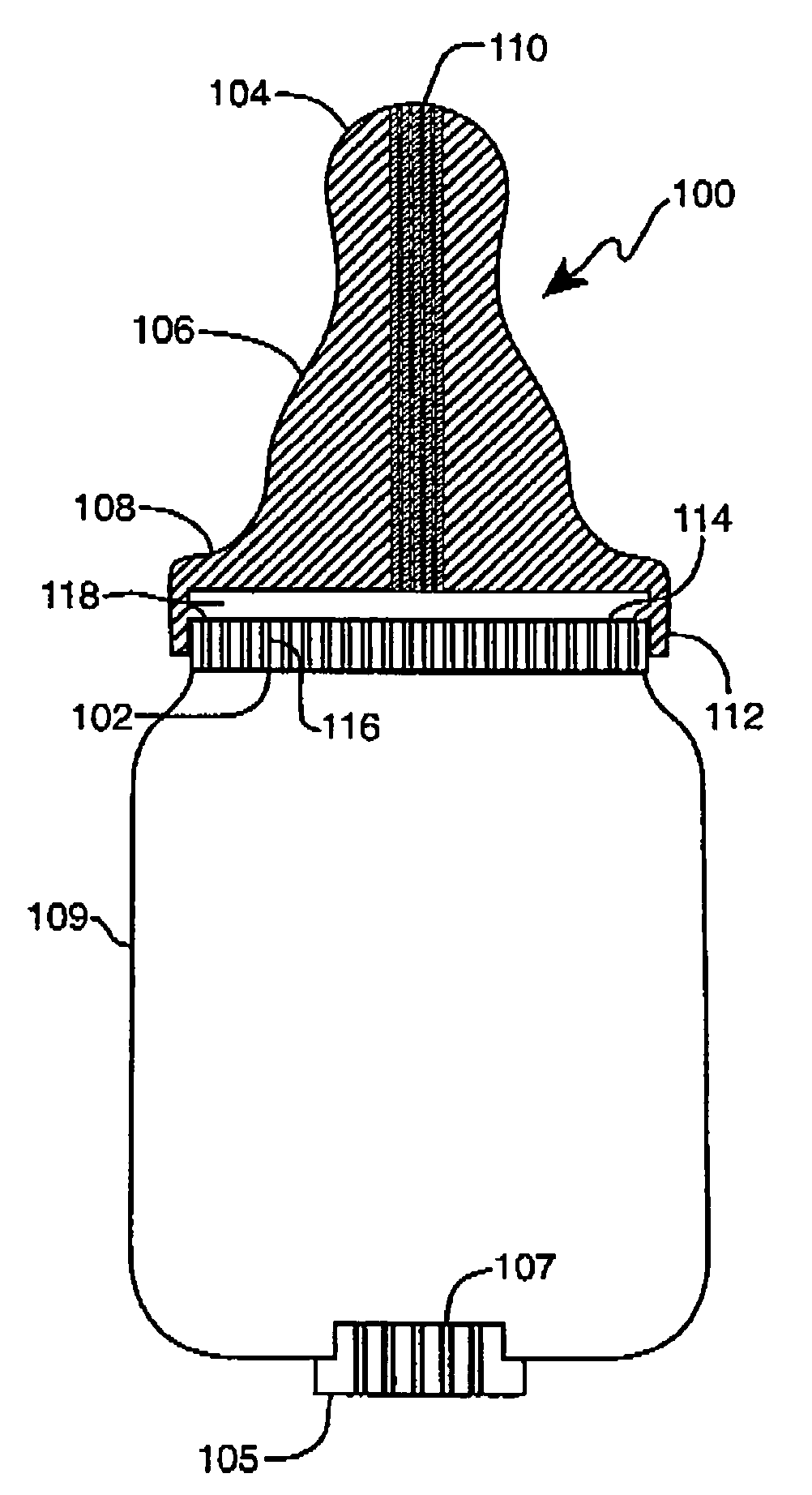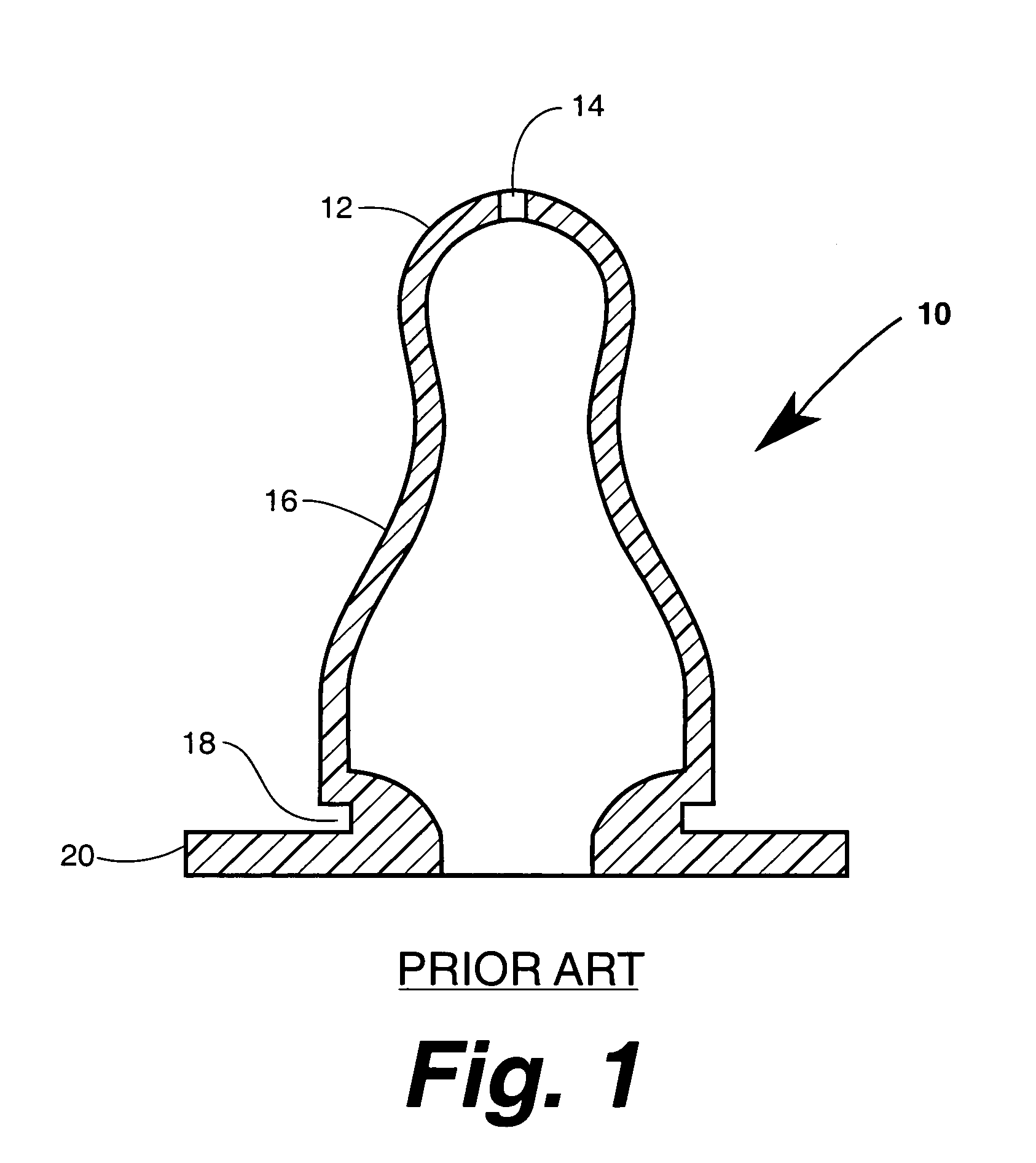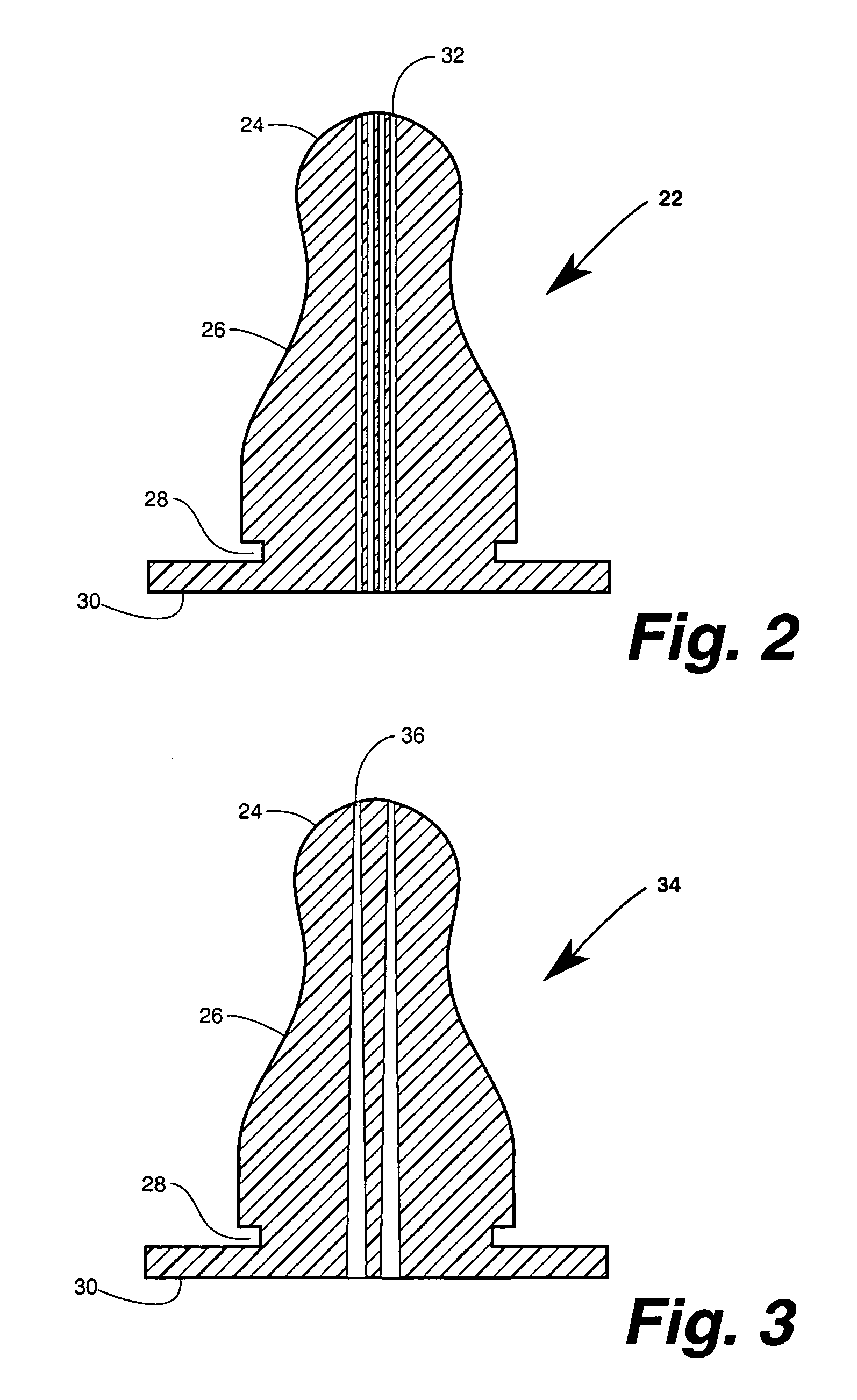Air-admittance device and method for making same
a technology for air-admiration devices and nipples, which is applied in the field of baby-feeding nipples, can solve the problems that the fluid-delivery passage embedded in the solid or non-reticulated porous flexible nipple body (like the human nipple) cannot be easily closed off, and achieves the effects of easy cleaning and sterilization, increased pressure, and easy closur
- Summary
- Abstract
- Description
- Claims
- Application Information
AI Technical Summary
Benefits of technology
Problems solved by technology
Method used
Image
Examples
Embodiment Construction
[0048]Referring to the drawings, and in particular to FIG. 1, there is shown a prior art nipple, generally represented by reference numeral 10. Nipple 10 is designed for use in combination with a baby bottle, not shown. The baby bottle can be a plastic or glass (hard) bottle for dispensing liquids therefrom. Nipple 10 has a tip 12 at its top end, shown as rounded, but can be flat or have any shape as is known in the art. Tip 12 has an aperture 14 passing through its center to provide a conduit for the liquid to be dispensed from the bottle. Aperture 14 can be formed in any fashion and of any shape known in the art, such as a slit or slits. Below the rounded tip 12, the nipple 10 flares outward to form a torso 16. Torso 16 preferably has an annular indent 18, adjacent its lower end. Below torso 16, nipple 10 terminates in a radial or horizontal flange 20. Flange 20 assists in mounting nipple 10 in a retaining ring, not shown, and sealing the free edge of a bottle when the nipple is m...
PUM
| Property | Measurement | Unit |
|---|---|---|
| length | aaaaa | aaaaa |
| length | aaaaa | aaaaa |
| contact angle | aaaaa | aaaaa |
Abstract
Description
Claims
Application Information
 Login to View More
Login to View More - R&D
- Intellectual Property
- Life Sciences
- Materials
- Tech Scout
- Unparalleled Data Quality
- Higher Quality Content
- 60% Fewer Hallucinations
Browse by: Latest US Patents, China's latest patents, Technical Efficacy Thesaurus, Application Domain, Technology Topic, Popular Technical Reports.
© 2025 PatSnap. All rights reserved.Legal|Privacy policy|Modern Slavery Act Transparency Statement|Sitemap|About US| Contact US: help@patsnap.com



